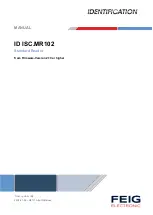
Intel® Server System R2000LH2/T2 Product Family TPS
Power Subsystem
Revision 1.0
21
3.5
AC Input Specifications
3.5.1
Power Factor
The power supply meets the power factor requirements stated in the Energy Star Program
Requirements for Computer Servers. These requirements are stated below.
Table 8. Power Factor
Output power
10% load
20% load
50% load
100% load
Power factor 1600w
AC
> 0.80
> 0.90
> 0.90
> 0.95
Note: Tested at 230VAC, 50Hz and 60Hz and 115VAC, 60Hz
3.5.2
AC Input Voltage Specification
The power supply operates within all specified limits over the following input voltage range.
Harmonic distortion of up to 10% of the rated line voltage does not cause the power supply to
go out of specified limits. Application of an input voltage below 85VAC does not cause damage
to the power supply, including a blown fuse.
Table 9. AC Input Voltage Range
Parameter
Min
Rated
Max
Start Up VAC
Power Off VAC
Voltage (110)
90 Vrms
100-127 Vrms
140 Vrms
85VAC +/-
4VAC
70VAC +/-
5VAC
Voltage (220)
180 Vrms
200-240 Vrms
264 Vrms
Frequency
47 Hz
50/60
63 Hz
Note:
1. Maximum input current at low input voltage range is measured at 90VAC, at max load.
2. Maximum input current at high input voltage range is measured at 180VAC, at max load.
3. This requirement is not to be used for determining agency input current markings.
3.5.3
AC Line Isolation Requirements
The power supply meets all safety agency requirements for dielectric strength. Transformers’
isolation between primary and secondary windings complies with the 3000VAC (4242VDC)
dielectric strength criteria. If the working voltage between primary and secondary dictates a
higher dielectric strength test voltage, the highest test voltage will be used. In addition the
insulation system complies with reinforced insulation per safety standard IEC 950. Separation
between the primary and secondary circuits, and primary to ground circuits, complies with the
IEC 950 spacing requirements.
3.5.4
AC Line Dropout/Holdup
An AC line dropout is defined to be when the AC input drops to 0VAC at any phase of the AC
line for any length of time. During an AC dropout the power supply meets dynamic voltage
regulation requirements. An AC line dropout of any duration does not cause tripping of control
signals or protection circuits. If the AC dropout lasts longer than the holdup time, the power
supply will recover and meet all turn on requirements. The power supply meets the AC dropout
Содержание S4600LT2
Страница 12: ......
















































